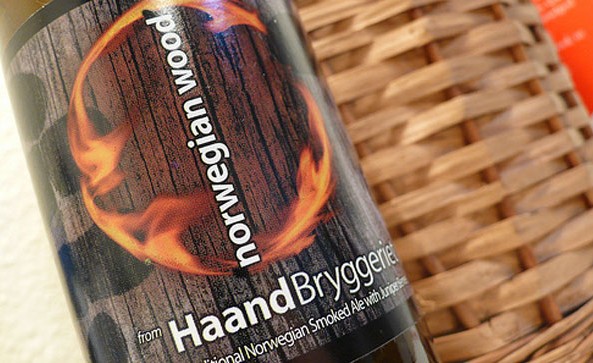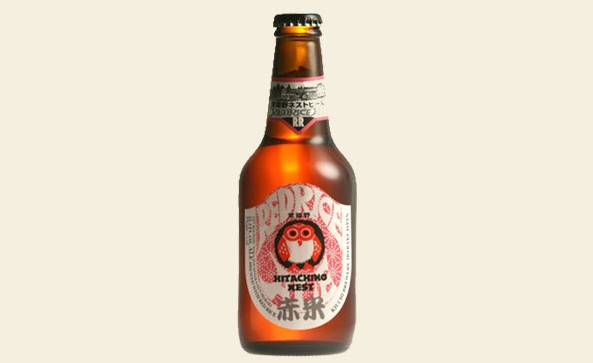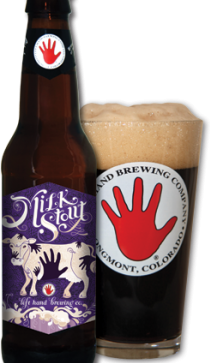
– Review – Lovibonds Dark Reserve No 3 – By DJ Adams
Lovibonds. Why does that name ring a bell? Apart from representing a long tradition of brewing, which we’ll dive into in a moment, it is also a name well known throughout the brewing and food science industries, as the surname of the inventor of the Tintometer. Used in brewing and many other industries, the Tintometer is a device for measuring and classifying liquids by colour, and was invented in the 19th century by Joseph William Lovibond. The Tintometer classification and colour scale system is still used today by brewers to buy their malt. (You’ll no doubt be pleased to know that, according to the Tintometer Group website, their modern digital water test equipment and liquid colour test instruments are, ahem, waterproof.)
But before we go any further, let’s get to the bottom of the Lovibonds name as it applies to the brewing company. Jeff Rosenmeier is the current proprietor and owner of Lovibonds Brewery. Originally from the States, and a software engineer (there’s hope for me yet!), Jeff came to Henley-on-Thames, already bitten by the brewing bug and looking for a site for his expanding brewing ventures, came across the site that had originally belonged to John Lovibond & Sons Brewers and Merchants, and took over the name. Yes, that Lovibond. John Locke Lovibond was the father of Joseph William and three other sons who set up a brewing partnership in 1872. So the name Lovibond is almost literally steeped in brewing history and science.
Transitioning into its second incarnation, the Lovibonds brewing respect has only grown. With a handful of year-round brews, limited releases, specials and prototypes, the quality of their beers is becoming well known. I’m here at Port Street Beer House with a Dark Reserve Nr 3 in my glass. The person next to me has already picked up the aroma of bourbon. Jack Daniels, to be precise. This is a porter aged in Tennessee whiskey barrels. Dark brown with a brief tan head, you can almost sense the wet wooden barrel innards, imparting vanilla, nuts and raisins. The body is not as heavy as one might expect, and along with the malty mouthful there’s a dark chocolate and bitter, almost sour finish, with some brown sugar sweetness towards the bottom of the glass. It’s a strong one – at 7.4%, but the sample disappeared fairly quickly and it didn’t feel like I was drinking something that potent. The sourness and relative lightness definitely added to the appeal, and the drinkability.
Port Street Beer House is currently running a Festival Of Britain(s Beers) and have brought together a great collection of British brewing talent. Lovibonds is a worthy member of this collection, and have earned their place at the taps with this excellent brew. The Festival is on until this Sunday 7th April, so get yourself down there before this Dark Reserve is gone. Quick!
Brewer: Lovibonds
Brew: Dark Reserve Nr 3
Style: Porter
ABV: 7.4%
Words by DJ Adams – http://www.pipetree.com/qmacro/

– Review – Haandbryggeriet Norwegian Wood / By DJ Adams
Haandbryggeriet – what a mouthful, and we haven’t even got to the name of the brew yet! Actually, when you break it down, this name is from two Norwegian words and simply translates to “Hand Brewery” – in other words, an extremely small scale operation. Four guys, working on a voluntary basis, brewing by hand in a small building in Drammen, southwest of Oslo. At this scale, and with the enthusiasm that oozes from the pages of their modest website, it’s clear that the brewers are fantastic amateurs, in the original, complimentary sense of the word – working the brewery for the love of it. (If you’re curious about this reclaiming of the word ‘amateur’, read Paul Graham’s essay “What Business Can Learn From Open Source” here: http://paulgraham.com/opensource.html)
For a small operation, Haandbryggeriet has certainly produced a wide range of beers – from a wheat stout called “Dark Force”, through an Akevitt barrel aged porter, to a hop-free Gruit beer made with herbs, brewed as a guest beer in cooperation with the de Molen bewery.
Norwegian Wood is a Haandbryggeriet beer available at Port Street Beer House on tap, and is brewed all year round. It’s a traditional Norwegian beer that has been recreated in memory of the farm brews that abounded when old laws required them to produce ale (farms were sometimes confiscated and went to the church and the king if they didn’t). In fulfilling their requirements, the farms usually kilned the malt over an open fire, giving each brew a smokiness that has been recreated here. The brew was enhanced with the traditional spice for all Norwegian beer at the time – juniper. The juniper spice comes not only from the berries themselves, but also from the twigs that are placed in the mash tun.
So many miles and years away from these traditional Norwegian farms, I sit here with a serving of Norwegian Wood. As I observe the hazy copper colour and the fading creamy head, there’s an intense aroma of pine and smokiness. Not an unpleasant or strong smokiness, but something more subtle, akin to pipe tobacco. There’s a taste of pine and a hint of cooked juniper berries, and rather than smoky, the flavour is more nutty and slightly sticky sweet, with an undercurrent of charcoal or cinder. The first sips also had a fruitiness about them but towards the bottom of the glass this had been replaced with a decent hint of malt that was very pleasant.
Haandbryggereit brews Norwegian Wood with smoked malt from Germany, along with other malts including crystal and chocolate. There’s a wealth of aromas and flavours in a small glass of this traditional ale, and the smokiness is by no means the dominant feature. I wouldn’t describe myself as a fan of smoked beer in the classic “Rauchbier” sense, but I definitely would order this again. With pine, hazelnuts, juniper and cinder in there, this beer is not only a mouthful to pronounce, but a very pleasant mouthful to enjoy.
Brewer: Haandbryggeriet
Brew: Norwegian Wood
Style: Traditional Ale
ABV: 6.5%
Words by DJ Adams www.pipetree.com/qmacro/

– Review – Hitachino Nest Red Rice Ale / By DJ Adams
And now for something completely different. Last week Port Street Beer House took delivery of a small number of cases of beer from the Kiuchi brewery based in Ibaraki-Ken, Japan. Craft beer from the USA? Check. Classic beers from Belgium and elsewhere in mainland Europe? Check. Amazing small-brewery beers from the UK? Double-check. But craft beer from Japan?
Beers from Japan are making an inroad into the UK via importers in Europe, Italy in particular. Port Street Beer House has heralded Hitachino Nest’s arrival in Manchester by being the first establishment to stock it, in particular the Weizen, Espresso Stout, Sweet Stout, Amber Ale and the Red Rice Ale.
If the first word that comes to mind is ‘sake’ when thinking of Japanese breweries, you’re on the right track. Hitachino Nest is the main beer brand from the Kiuchi brewery, but they only started brewing beer in 1996. Over 150 years prior to that, the brewery was established by Kiuchi Gihei to brew sake from the warehouse stocks of rice collected from farmers as land tax on behalf of the dominant Mito Togugawa family in that region. After the end of the Second World War, when demand for sake increased, the Kiuchi brewery, by then under the leadership of Mikio Kiuchi, bucked the trend and remained true to quality and craftsmanship, resisting the temptation to mass-produce.
So, Red Rice Ale. Not as unusual as it sounds, rice is a common starch adjunct used in brewing beer, most famously (infamously?) used in Anheuser Busch’s Budweiser pale ale. Adjuncts are used for a number of reasons, from cost saving measures (rice is cheaper than barley) to introducing taste, body and mouthfeel features. The addition of red rice is additionally interesting as traditionally it is regarded as ‘weedy’, in other words a variety that produces fewer grains per plant than cultivated rice, and is considered a weed or a pest that grows despite, rather than because of, cultivation.
That the red rice starch adjunct is considered a weed becomes completely irrelevant when you consider the immensely positive impact of it’s addition to the brew of this amber ale. With a pinkish pale colour and impressive soapy-white head, a light sweetness is at the heart of Red Rice Ale, with a fruity rice aroma on the nose reminiscent of rose water, and a subtle strawberry-laced experience throughout. I never thought I’d say this as something positive, but a waxy mouthfeel lends a distinctively pleasant note to the drinking experience. None of the 7.0% ABV strength is evident (except when I walk from the bar to a nearby table to write this review), and the beer is a very easy drinking experience.
Hitachino Nest has been established in the USA for a decade or so now, and rightly so. With its distinctive Owl logo, quality top-fermented beers and innovative techniques, it’s only a matter of time until they’re established over here too. Until then, get yourself down to Port Street, and see for yourself. You won’t be disappointed.
Brewer: Hitachino Nest
Brew: Red Rice Ale
Style: Amber Ale
ABV: 7.0%
Words by DJ Adams http://www.pipetree.com/qmacro/

– Beer Review – Left Handed Brewing Co: Milk Stout / By DJ Adams
Sometimes you’re not in the mood for what everyone else is having. That’s the tagline of this Longmount, Colorado brewer Left Hand Brewing Co’s Twitter presence. As I approach the bar at Port Street Beer House and observe the orders for a seemingly endless collection of beers, one bottle calls out to me from the fridge. Milk Stout. Exactly what I’m looking for. This beer’s reputation precedes it; awards galore already won, most recently Gold in the European Beer Star Competition.
Sunlight streams through the windows on this cold, crisp autumn day as I reverently carry the bottle and a stemmed glass to the table. This is not your father’s stout. No sense of vast volumes of heavy blackness tinged with bitterness here, thank you very much. This is a full-bodied sweet stout, an English style beer from the late 19th century. Espresso coloured, with coffee traces and slight vanilla notes, this is an incredibly velvety smooth experience from start to finish. Any hints of bitterness are more than balanced from the inclusion of milk sugar, which is defined as “a sugar comprising one glucose molecule linked to a galactose molecule”. Galactose? Space milk? All I know is that the inclusion of milk sugar into the brew has had a fabulous effect. Sweetness and chocolate overtones make this a very enjoyable experience. Normally at this stage in the review I have some beer left in the glass, but the glass and bottle are both empty already.
Left Hand Brewing Co’s philosophy is about balance. It’s fair to say that they’ve achieved a great balance between traditional style and modern interpretation, between the Magnum and US Golding Hops, the myriad malts (from Crystal to Flaked Barley and Chocolate) and the milk sugar sweetness, and between the relatively high ABV content and inherent drinkability. Next time you’re stuck or spoiled for choice, go for something different. Take a chance on this Milk Stout, and you’ll be far from disappointed.
Brewer: Left Hand Brewing Co
Brew: Milk Stout
Style: Sweet Stout
ABV: 6.0%
http://www.lefthandbrewing.com/
Words by: DJ Adams – http://www.pipetree.com/qmacro/